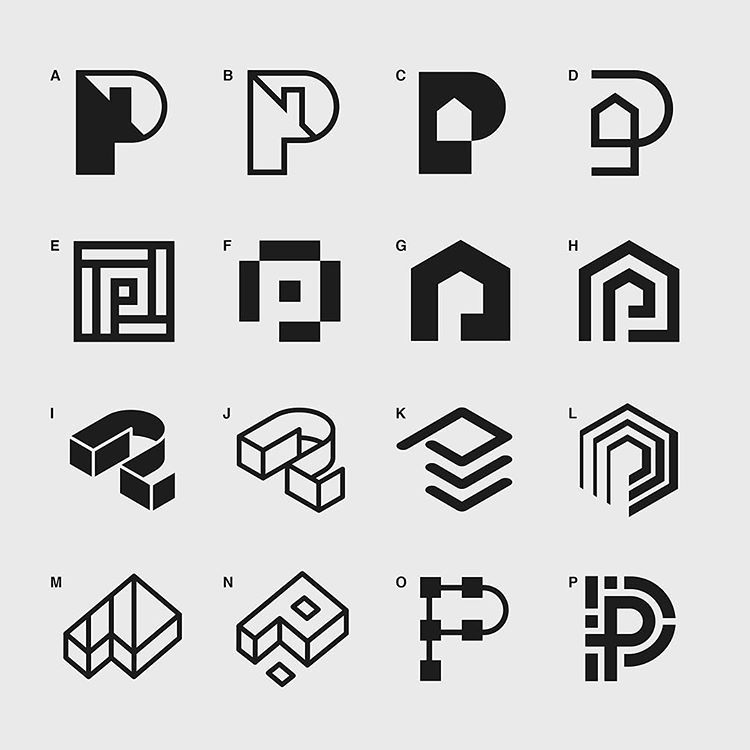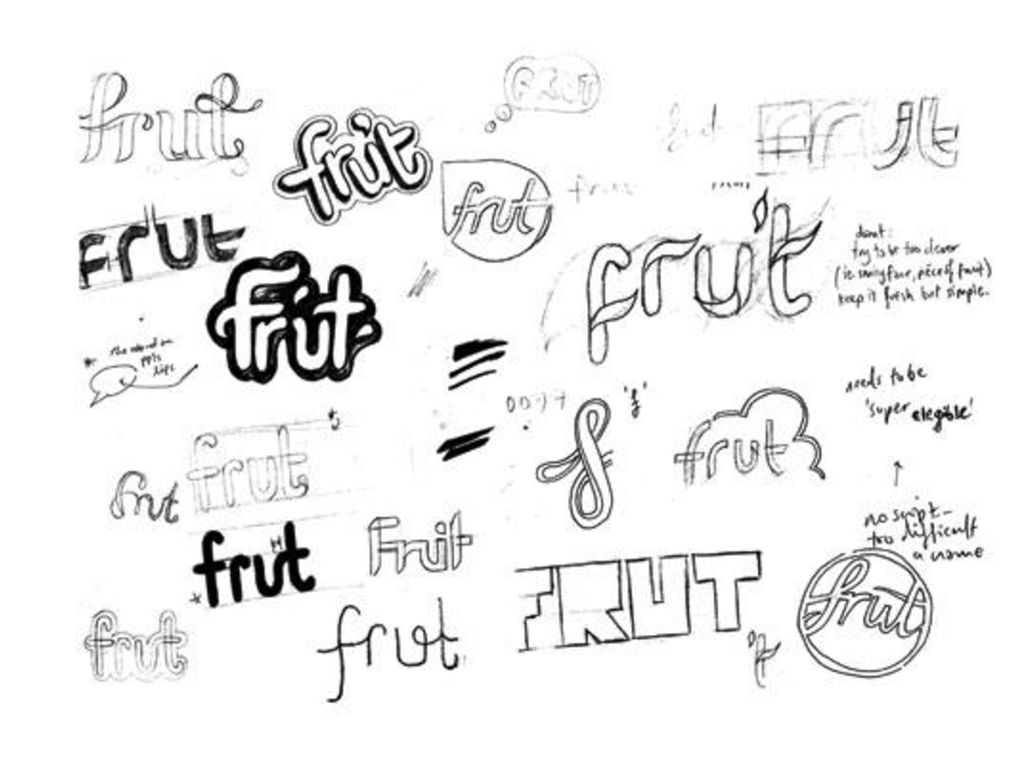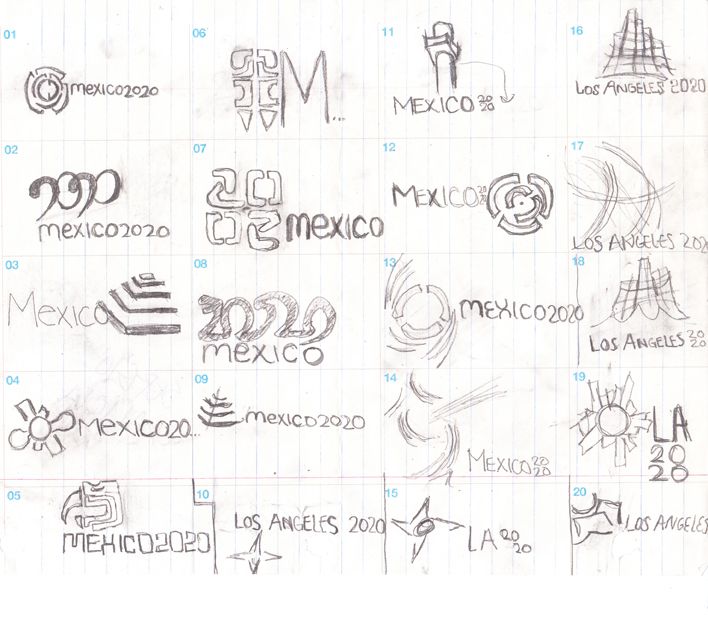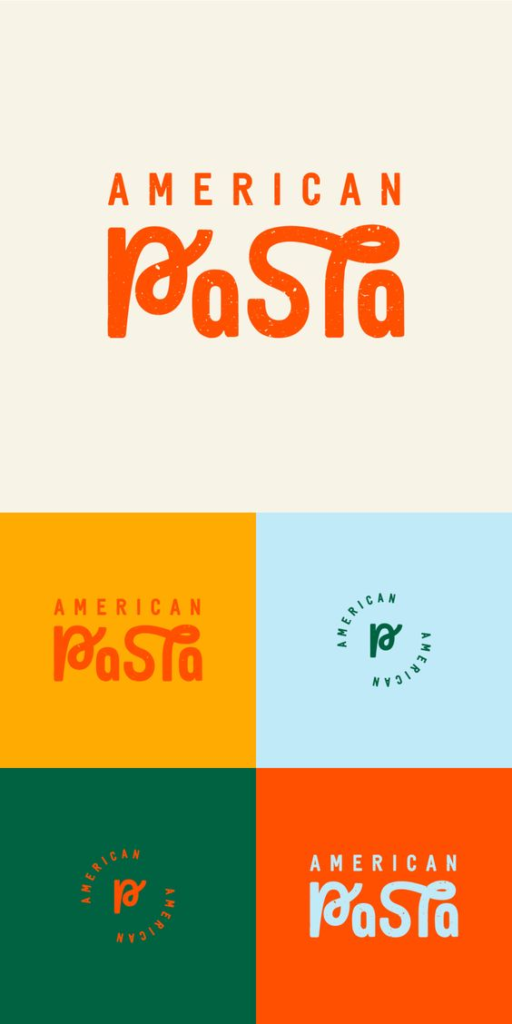Assignment Overview:
In this assignment, you will explore and develop your personal brand as a graphic designer and showcase your skills in your own brand. Personal branding is crucial in establishing your unique identity and setting yourself apart in a competitive design industry. You will create a comprehensive personal branding strategy that includes your visual identity.
Objectives:
Understand the importance of personal branding in the context of graphic design. Develop a strong visual identity that reflects your design style and personality. Demonstrate effective communication skills in presenting and promoting your personal brand.
Assignment Components:
1. Personal Branding Research (33%)
- Research and analyze the personal branding strategies of successful graphic designers.
- Identify key elements that contribute to a memorable personal brand in the design industry.
2. Visual Identity Creation (33%)
- Design a logo that represents your design style and personality.
- Select a color palette, typography, and visual elements that align with your brand’s identity.
- Create a style guide that outlines the usage of your visual elements across various design assets.
3. Brand Communication (33%)
Prepare a presentation that introduces your personal brand to the class.
Clearly articulate your design philosophy, style, and the story behind your brand.
Discuss how your personal brand differentiates you in the competitive design industry.
Submission Guidelines:
- A presentation outlining your personal branding strategy and rationale (2-5 pages).
- Visual identity elements, including logo, color palette, typography choices, examples of use, and style guide.
- Presentation slides for your brand communication presentation.
Grading Criteria:
- Clarity and creativity of visual identity.
- Consistency and professionalism of online presence.
- Effectiveness of brand communication in the presentation.
Contents
Project 1 (Part A): Personal Branding Brief
Project Overview:
Create a compelling personal branding identity, including a unique and versatile logo, that reflects Your professional identity and values. This personal brand will be used across various platforms to establish a consistent and memorable presence.
Project Objectives:
- Develop a distinctive and memorable personal brand that captures [Your Name]’s personality, expertise, and aspirations.
- Design a versatile logo that can be used across both digital and print media.
- Ensure the personal branding aligns with [Your Name]’s professional goals and target audience.
- Establish a consistent visual identity that reflects professionalism, creativity, and uniqueness.
Answer these question to start getting an understanding of what your brand will look like.
- What values or attributes would want to explore that represent your brand?
- How would you describe your personality? (e.g., innovative, approachable, sophisticated, energetic, etc.)
- What emotions do you want your personal brand to evoke in the audience?
- Do you have any initial ideas or preferences for the logo’s visual style?
- Are there any specific symbols, icons, or imagery that should be included in the logo?
- What colors do you envision for the logo? Are there any color preferences or associations?
- Besides the logo, what other visual elements (typography, patterns, etc.) would complement the personal brand?
- Are there any individuals or brands that you admire or consider competition?
- Do you have any examples of personal branding or logos that you find inspiring?
- Where will the personal brand and logo be primarily used? (e.g., social media profiles, website, business cards, presentations)
Deliverable: Create a Word doc or Google Doc with your answers
Due: Thursday, February 1st, 2024, Upload Documents to the Project 1 Part A Personal Branding Brief tab under Student work.
Project 1 Part B: Personal Branding Moodboard
Assignment Description:
In this project, you will delve into the exciting world of personal branding through the creation of a comprehensive moodboard. A moodboard serves as a visual representation of a brand’s personality, values, aesthetics, and overall vibe. This assignment will allow you to showcase your graphic design skills while exploring the intricate elements that contribute to an individual’s personal brand.
Project Objectives:
Understanding Personal Branding: Gain insights into the concept of personal branding and its significance in today’s professional and creative landscape.
Visual Storytelling: Develop the ability to visually communicate a cohesive narrative that encapsulates the essence of an individual’s personal brand.
Aesthetic Exploration: Experiment with diverse design styles, color palettes, typography, imagery, and other visual components to create a harmonious and visually appealing moodboard.
Research and Curation: Practice effective research and curation skills to gather relevant inspiration, references, and visual elements that align with the personal brand you are working on.
Composition and Layout: Learn to arrange and compose various design elements on a digital canvas to create a balanced and impactful visual composition.
Digital Design Tools: Utilize graphic design software (e.g., Adobe Creative Suite Photoshop or Illustrator or InDesign, whatever you are comfortable with) to craft your mood board, showcasing your proficiency with these tools.
Project Guidelines:
Brand Exploration: Research and gather information about the values, aspirations, hobbies, and any other relevant aspects that you want to contribute to your personal brand.
Visual Elements: Collect imagery, colors, typography examples, textures, patterns, and other design elements that resonate with the individual’s personal brand attributes. (You can gather references for websites such as google images or Pinterest)
Design Composition: Arrange the collected design elements on a digital canvas to create a visually cohesive moodboard. Experiment with different layouts to find the most effective arrangement.
Typography: Integrate typography that complements the individual’s brand image. Experiment with various fonts, sizes, and styles to convey the desired emotions. (doesnt have to be the final font you are planning to use in your final product)
Color Palette: Select a color palette that resonates with the your brand personality. Ensure the colors evoke the intended emotional response.
Examples of mood boards:
Presentation: Prepare a final presentation of your mood board. This can include a digital file (PDF or image) that can be easily shared and a brief description explaining the design choices you’ve made.
Deliverables:
- A high-resolution digital mood board showcasing your personal branding design exploration.
- 2. A brief written description (approximately 200-300 words) explaining the design choices you’ve made, the reasoning behind your selections, and how they reflect your personal brand.
Evaluation Criteria:
Your project will be evaluated based on the following criteria:
Concept and Creativity: The originality and depth of the visual concept that aligns with the individual’s personal brand.
Visual Execution: The quality of design elements, composition, and overall visual appeal of the mood board.
Coherence: The degree to which the chosen elements collectively convey a consistent and unified personal brand identity.
Typography and Color: The effectiveness of typography and color palette choices in conveying the intended emotions and brand personality.
Presentation and Communication: The clarity and conciseness of the written description that accompanies the mood board.
Submission:
Submit your project as a digital file (PDF or image) along with the written description via the discussions on Openlab.
Due: Thursday, February 8th, 2024; Upload and submit to Openlab before 6 pm for in-class discussion.
Comments and feedback on other’s posts is highly encouraged.
Remember, this project is not only about design skills but also about understanding and effectively communicating the essence of a personal brand through visual elements. Good luck and have fun exploring the world of personal branding!
Project 1 Part C: Personal Logo Sketching and Brainstorming
Objective: In this assignment, you will explore the process of sketching and brainstorming to generate ideas for your personal logo. This exercise will help you develop a strong foundation for creating a logo that reflects your personality, interests, and aspirations.
Materials Needed:
- Sketchbook or drawing paper or digital drawing tools
- Pencils, erasers, and drawing tools
- Reference materials (if desired, e.g., images, symbols, or words that inspire you)
Step 1: Thumbnail Sketching
Start creating small thumbnail sketches. These are quick, rough, and small-scale drawings that help you explore your ideas visually.
- For each idea or concept you referenced in your mood board, try to visualize it as a simple, iconic symbol. Sketch multiple variations of each concept.
- Experiment with different compositions, shapes, and layouts for your logo. You can use basic geometric shapes and lines to simplify your ideas.
Examples of logo thumbnails
Step 2: Reflection
- Post your logo exploration (15-20 sketches) in the comments with a summary of how your logo relates to your mood board and the thought process you had while creating your thumbnails (200-300 words)
This sketching and brainstorming process should help you generate a range of ideas and concepts for your personal logo. It’s an essential step in the logo design and brand identity process as it allows you to explore various possibilities before moving on to more refined design work.
Due: Thursday, February 15th, 2024; Upload and submit to Openlab before 6 pm for in-class discussion.
Project 1 Part D: Personal Logo Black and White Exploration
Assignment Overview:
In this assignment, you will embark on a creative journey to design a personal logo that represents your unique identity and style. The focus of this task is to explore the use of black and white elements to create a visually striking and versatile logo. By using Adobe Illustrator, you will have the opportunity to refine your vector design skills while developing a logo that can be adapted for various applications.
Assignment Objectives:
- Conceptualize Your Personal Brand:
- Reflect on your personality, interests, and aspirations to develop a clear concept for your personal logo. Consider the message and values you want it to convey.
- Research and Inspiration:
- Explore existing personal logos and other relevant design examples to gather inspiration. Analyze their use of black-and-white elements and consider how they communicate effectively.
- Sketch and Ideation:
- Start the creative process by referencing your logo thumbnails you have drawn in the previous assignment. This step allows you to brainstorm and visualize different concepts before moving to digital design.
- Adobe Illustrator Exploration:
- Utilize Adobe Illustrator to translate your chosen sketch into a vector-based logo. Experiment with shapes, lines, typography, and various black and white design elements.
- Balance and Composition:
- Pay close attention to the balance, proportion, and overall composition of your logo. Ensure that it remains visually appealing and communicates your intended message.
- Typography:
- If your logo incorporates text, carefully select and manipulate fonts to complement the design. Explore different typography styles that enhance the overall aesthetics.
- Detail and Precision:
- Use Illustrator’s tools to refine your logo with precision. Fine-tune anchor points, curves, and lines to achieve the desired level of detail.
- Scalability and Versatility:
- Ensure that your logo maintains its clarity and impact when resized. Test it at various scales to confirm its versatility.
- Black and White Aesthetics:
- Embrace the challenge of working with only black-and-white elements. Experiment with contrasts, shades, and patterns to create a visually compelling logo.
- Presentation:
- Prepare a visual presentation that showcases your logo design. Include variations, if applicable, and present it clearly and professionally.
References:

Assignment Requirements:
- Create your personal logo in Adobe Illustrator. Save your work in vector format for future use.
- Include a brief written description (200-300 words) explaining the concept behind your logo, and how it has evolved so far from your mood boards and sketches while reflecting design choices you made, and the intended message it conveys.
- Submit your assignment in the comment section of this assignment.
Grading Criteria:
Your assignment will be evaluated based on the following criteria:
- Concept and Originality: The uniqueness and relevance of your personal logo concept.
- Execution: The quality of your vector design and attention to detail.
- Composition: The overall balance and visual appeal of your logo.
- Typography: If applicable, the effective use of typography in your logo.
- Presentation: The professionalism of your visual presentation and written description.
Submission Guidelines:
- 1920×1080 (Widescreen) JPG with 8-10 Black and white logos
Important Dates:
- Due: Thursday, February 22nd, 2024; Upload and Submit to Openlab before 6 pm.
Additional Resources:
If you have any questions or need assistance during the assignment, please don’t hesitate to reach out. Feel free to explore additional resources on Adobe Illustrator techniques and logo design principles to enhance your skills.
Designing a personal logo is an exciting opportunity to express your identity through graphic design. Enjoy the creative process, and I look forward to seeing your unique logo exploration!
Project 1 Part E: Applying color and typography to your B+W logo
Assignment Overview: Applying Color and Typography to Your B+W Personal Logo Exploration
Objective: In this assignment, you will expand upon your existing black-and-white (B+W) personal logo exploration by introducing color and typography. The goal is to refine your personal brand identity through the strategic use of color and typography, creating a distinctive and visually compelling logo that represents you effectively.
Key Learning Outcomes:
- Understand the principles of color theory and typography in the context of personal branding.
- Develop the ability to select and harmonize colors that align with your personal brand identity.
- Gain experience in choosing typefaces that convey your personality and message.
- Create a finalized personal logo that seamlessly integrates visual elements, color, and typography.
Assignment Tasks:
1. Color Exploration: a. Research color psychology and its relevance to personal branding. b. Develop a color palette that reflects your personal brand identity. Consider mood, emotions, and individuality. c. Apply these colors to your existing B+W personal logo exploration, experimenting with various combinations to find the most effective one. d. Create a color style guide detailing hex codes and color usage guidelines for your logo.
2. Typography Selection: a. Explore typography options that match your personality and brand message. Consider factors like readability, uniqueness, and alignment with your personal identity. b. Pair typefaces thoughtfully to complement your logo design. c. Create a typography style guide that includes font names, weights, and usage guidelines.
4. Refine Your Personal Logo: a. Incorporate the selected color palette into your B+W personal logo exploration, ensuring consistency and harmony. b. Apply the chosen typography to your logo, making sure it enhances the overall design. c. Experiment with variations, layout adjustments, and sizing to achieve balance and visual appeal. d. Provide a rationale for your color and typography choices, explaining how they represent your personal brand identity.
5. Presentation: a. Prepare an engaging presentation showcasing your personal logo design, color palette, and typography choices. b. Include before-and-after comparisons to illustrate the impact of color and typography on your logo. c. Be prepared to present your work to the class, discussing your design decisions and how they reflect your personal brand identity.
Assessment Criteria: Your assignment will be evaluated based on the following criteria:
- Creativity and originality in the application of color and typography.
- Alignment with your personal brand identity, values, and message.
- Effective use of color theory principles.
- Appropriate typography selection and pairing.
- Quality and clarity of the presentation.
Submission Requirements: Submit your 5 top favorite logos from the B+W exploration as a JPG (1080 x1920 pixels) containing your logo design, color palette, typography choices, and a rationale (200-300 words) on your color and typography choices. in the comments section of this assignment.
Examples
Prepare to present your work to the class during the designated presentation session.
Due: Monday, February 26th, 2024; Upload & Submit to Openlab before 6 pm.
This assignment offers you the opportunity to further develop your personal brand identity and design skills while creating a unique and meaningful logo that represents you authentically. Enjoy the creative process and make your personal brand shine!
Project 1 Final Part: Finalizing the logo and brainstorming ideas for additional supporting elements, graphics, and key visuals
Assignment Objective: The objective of this assignment is to guide you through the process of selecting a final logo for a chosen brand or project, along with the development of supporting elements and key visuals. This assignment aims to enhance your understanding of the importance of a well-designed logo and its role in brand identity, while also emphasizing the significance of supporting elements and key visuals in reinforcing brand recognition and messaging.
Step 1: Final Logo Selection
Choose one logo concept as the final design.
Explain your rationale for selecting this particular logo, highlighting how it aligns with the brand’s values and goals.
Step 2: Supporting Elements:
Develop supporting elements that complement the logo and enhance brand identity. This may include taglines, color palettes, and visual motifs.
Explain the significance of each supporting element in reinforcing the brand’s messaging.
Step 3: Key Visuals
Create a concept for key visuals that can be consistently used across various marketing materials, such as advertisements, social media, and packaging.
Describe how these key visuals contribute to brand recognition and recall.
Examples of final deliverables
Mockups for logo proof examples can be found here:
Stationary mockups: https://www.freepik.com/free-photos-vectors/branding-identity-mockup
T-shirt Mockups
https://www.freepik.com/search?format=search&query=tshirt%20mockup
Hat Mockups:
https://www.freepik.com/search?format=search&query=Hat%20mockup
Project Template
https://drive.google.com/file/d/1ThpKe7bdv1Ho2GB2V4a0rMRht7zioWRr/view?usp=drive_link
Submission Guidelines:
- Submit a visual report detailing the brand selection, research, logo design process, feedback received, and final logo selection on Behance.
- Final layouts and presentations (1920×1080)can be designed in Illustrator Indesign Photoshops With JPGs uploaded to Behance.
- Include visual materials such as sketches, digital drafts, and the final logo design.
- Present your work during the designated presentation session.
Assessment Criteria: Your assignment will be evaluated based on the following criteria:
- Creativity and originality in logo design.
- Alignment of the logo with the brand’s identity and messaging.
- Effectiveness of supporting elements and key visuals in enhancing brand recognition.
- Clarity and professionalism of the presentation.
Due: All designs must be finalized and uploaded to Behance before 6 pm, with an in-class presentation on Monday, March 4th, 2024









Recent Comments